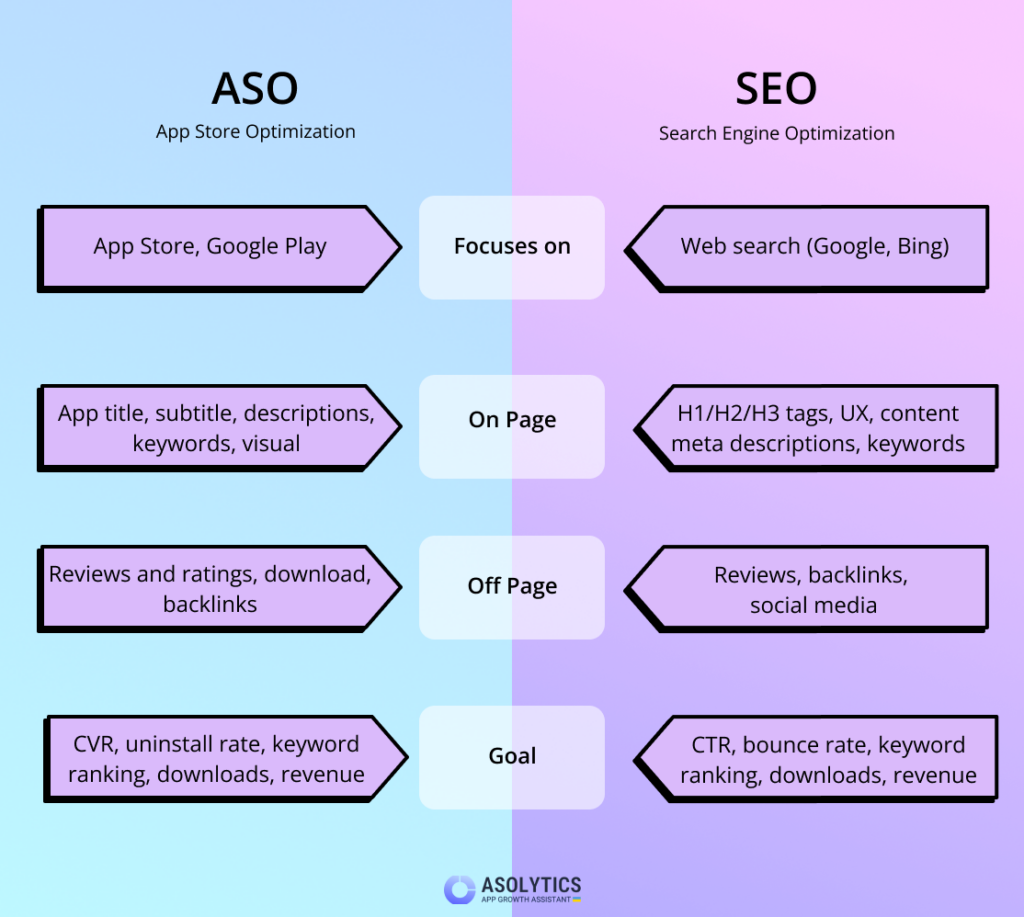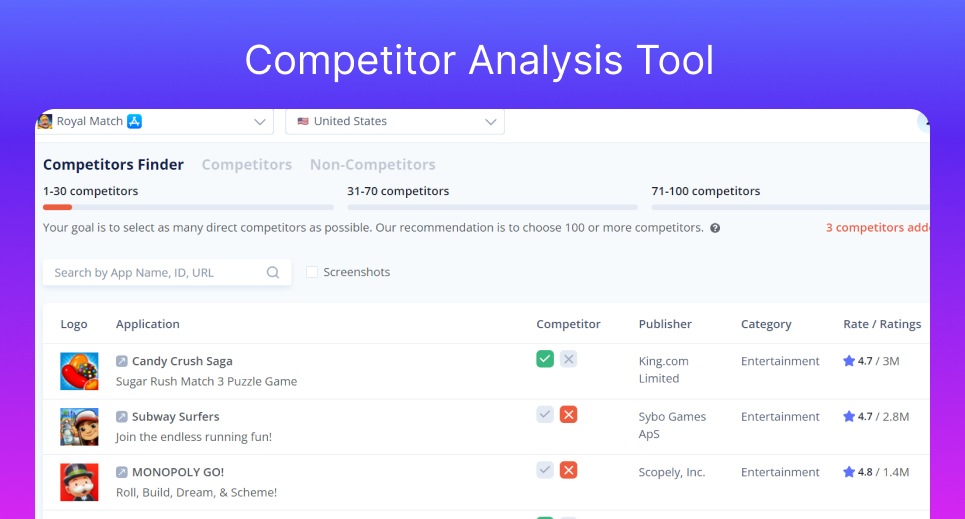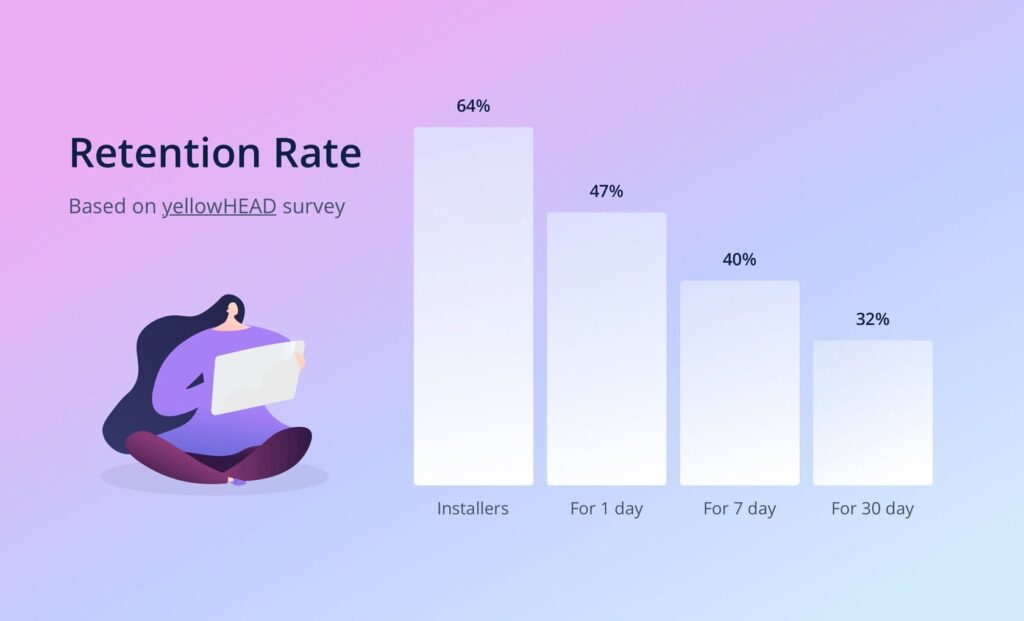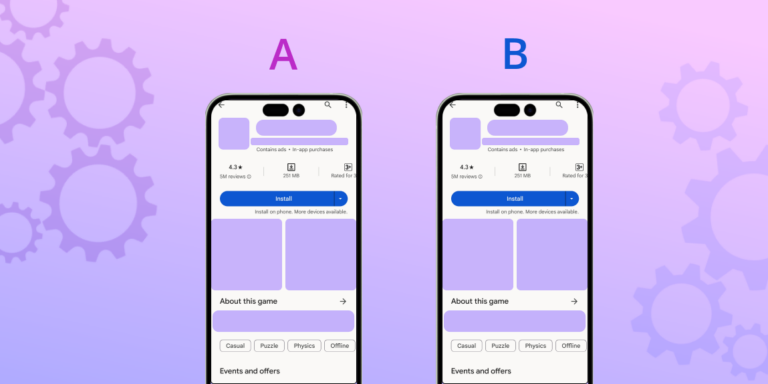After designing a top-notch app and identifying your core consumers’ needs, you can concentrate on the next step of your success strategy i.e., retaining your loyal buying audience and then generating even more leads. Understanding the average mobile app retention rate is crucial, as it helps measure how well your app keeps users engaged over time. Customer retention is more than meets the eye though, and it’s not just about client support. In brief, it’s about giving your clients value for trusting you with their money.
Table of Contents
In the words of Brian Balfour, Founder/CEO of Reforge, former VP Growth at Hubspot, ‘If your retention is poor then nothing else matters.’ Customer retention is your ability to foster interactions, build trust, and cultivate mutual growth with your audience long-term. This parameter can be measured with something called ‘retention rate’. App retention rate plays a vital role in your brand’s success. When approached smartly, this metric can contribute to amplifying your profit. The crucial thing here is to evaluate why you’re bleeding consumers and then adjust your approach to make them stay (and pay) as long (and as much) as possible.
In this piece, we will:
- cover user retention in general;
- define app retention rate;
- unveil core terminology and KPIs;
- dwell upon User Retention vs. User Acquisition;
- cover the importance of app retention;
- unveil how app retention saves your money;
- teach you how to calculate app retention rate;
- let you in on what a good app retention rate is;
- explain app retention stages;
- unveil mobile app retention specifics depending on a category;
- provide best strategies and tips for elevating app retention rate to the next level for your brand.
Furthermore, we’ll answer your most frequently asked questions about mobile user retention. Stay tuned.
What Is Average Mobile App Retention Rate?
Retention is the number of people who opened your app at least once during a certain day or week since they first got it. Or the number of people who started using your app for the very first time during a certain date range.
Simply put, retention is your app’s loyal fan base that sticks around even after some time passes. Retention rate is usually measured after Day 1, Day 7, and Day 30.
Looking to measure an app’s retention rate? Then just compare the number of users it had when you started measuring with the number of users it still has when you’re through. That way, you’ll easily identify the keepers and the leavers.
Defining Retention Rate for Mobile Apps
Let’s delve deeper into user retention definition. In mobile marketing and product management, ‘app retention rate’ stands for the number of people who keep on purchasing your mobile brand services within a set timeframe (typically a month) after the installation. For mobile brands that strive to grow and scale, customer retention is a crucial metric. Because a brand can’t scale if it’s losing clients. As a matter of fact, investment-wise, retaining existing consumers is more beneficial than generating new leads.

Retention suggests an already converted client, which differentiates the notion from mere client acquisition. The most powerful client-capturing strategies aid you in building long-term rapport with your core audience and forming loyalty to your mobile brand. In the long run, your loyal consumers may even transform into brand ambassadors. Ready to learn more about app retention rate formula? Keep reading for more details on the importance of retention metrics for apps.
Let’s Decipher Key Lingo & KPIs
Before we move forward, let’s clarify a few terms that are very important for understanding and mastering mobile app retention.
- Active users and DAU/MAU ratio
Active users is how many of your unique user audience enjoys an app throughout a certain timeframe. If you want to elevate your application’s potential and user churn, this parameter is a must-measure.
You can measure active users either on a daily or monthly basis. That said, you’ll have two corresponding parameters: Daily Active Users (DAU) and Monthly Active Users (MAU). The former calculates the number of unique users in a 24-hour period. The latter pinpoints the number of unique users within a 30-day timeframe.
You can benefit from any period of time when figuring out the number of your active users. The Weekly Active Users (WAU) parameter can even be taken into consideration in your calculations. But remember that DAU and MAU are the most common criteria to rely on as of today.
Your DAU/MAU ratio is closely linked to your product stickiness ratio. Upon calculating product stickiness, you will pinpoint the relative volume of active users who enjoy your app over a 24-hour period. This metric helps you predict your potential revenue. Also, it allows you to keep tabs on how often users come back to your product. This, in its turn, helps you skyrocket your product’s value.
The DAU/MAU formula is as follows: Number of DAU/ Number of MAU = DAU/MAU Ratio.
- Churn rate
Churn rate is how many of your users have slipped away within a certain timeframe. Those are users who have deleted your application and those who still have your app installed on their mobiles but have left it untouched for months. To calculate your churn rate, divide the number of users who left during a certain timeframe by the number of users you had when that timeframe began.
- Session length and time spent in-app
Session length is how much time users spend in an app whenever they launch it. For this definition not to mislead you, remember that all applications are different. For example, streaming music apps may count the time you’re listening in the background. While there are also always-on applications with in-built time limits.
Below, our experts have provided some helpful metrics to carve into your memory when it comes to session length and time spent in-app:
- Time per session;
- Time spent per session over time;
- Average number of sessions per user in a prearranged period;
- Time spent per N number of sessions;
- Session interval.
These metrics are self-explanatory, therefore, they don’t need any further detailing. Generally speaking, they accurately reflect your app’s engagement and long-term retention potential.
Theoretically, when people use an app often and spend more time in it, it suggests they’re getting value. However, theory and practice are contrasting notions. In practice, if they’re only sticking around because they’re struggling with a confusing app, it won’t lead to long-term value. Quite the contrary, this can only lead to losing the user. With that said, session length and time spent in-app are useful metrics. However, they don’t necessarily guarantee a happy user relationship or long-term retention.
- Screen views
Screen views is the content that users are checking out within your mobile application. Upon pinpointing this parameter, you will get the full picture about what content performs best and what users are looking at the most.This insight can help you fine-tune both the content and your entire app.
- User Lifetime Value (LTV)
LTV is among the leading app retention metrics. It represents the financial worth of each attracted customer. Mastering LTV helps you work up a successful loyalty program and even prevent ASO cannibalization. The additional plus side is that it helps you make informed decisions about retaining an array of user segments, from high-value customers to those with lower revenue contributions.
User Retention vs. User Acquisition
Let’s clarify something. Just like ASO vs. SEO, retention and user acquisition are not the same. Nevertheless, they are similar, pretty much like cousins.

To retain users, you need to bring them onboard in the first place. But here’s the interesting part. The techniques for acquiring users and the ones for keeping them are like apples and oranges, despite all being slices of the same app success pie.
Acquisition gives you quick wins. Even if in your case this number grows rapidly, it will mean nothing if you fail to make those users stay. As for retention, it comes with lasting profits and sheds light on the app’s general worth, as well as its prospects for success.
That said, a solid mobile growth strategy should work like this.
- Begin by attracting new users and showering them with a great first impression. Organize a positive onboarding experience, setting them up for success. This first step will empower your users and get them started on the right foot.
- Now, your task is to retain the newly acquired users. Go the extra mile to prevent them from abandoning your app after just a few uses. This stage can be challenging but offers long-term rewards. A strong retention strategy will transform new users into loyal, long-term customers. This, in its turn, will increase your app’s value and provide a stable source of revenue.
Jeff Bezos once said, ‘We see our customers as invited guests to a party, and we are the hosts. It’s our job every day to make every important aspect of the customer experience a little bit better.’ And that’s where app retention is all about.
We say forget about obsessively chasing fresh faces. These days, retention is the new acquisition. Smart app creators have sipped the wisdom tea and realized that retaining the users they already have is where the party’s at. Not only is it wallet-friendly (chasing newcomers can cost a pretty penny), but it’s also like investing in a timeless classic — your loyal users. They’re like your trusty friends who make your product the talk of the town.
Why Exactly App Retention Must Be Your Top Priority
Did you know that on average, an app loses a whopping 77% of its daily active users within the first 3 days after installation? The lesson here is obvious: master retention if you want to secure your app’s sustained presence, profitability, and LVT.
Retention assists you in evaluating your application’s performance per consumer. In general, a higher retention rate should be your highest priority because your loyal, long-term customers create positive dynamics and monetization opportunities within your product.
This vital parameter is also helpful for figuring out why a certain percentage of your consumers ditch your application, as well as getting the bigger picture of your application’s worldwide performance. Eventually, this information enables you to comprehend the stuff you need to tweak to make your core consumers stay with your brand longer.
Ultimately, the app retention rate gives you an insight into the lifespan of your product. Don’t forget that this parameter alters depending on the niche your product caters to. For instance, users may install a video collage app only when they need it, then take advantage of it, and uninstall it once their collage is ready. This scenario shouldn’t worry you because this pattern is typical for certain industries.
Here’s a brief outline of other perks of a high app retention rate for your business:
- loyal clients will bring their friends;
- happy customers leave positive reviews;
- more returning customers means more money;
- more money equals stable company growth.
With all that said, As Balfour wisely notes, failing to retain your customers is like watching money drain away from your business. Putting all your efforts into acquiring new customers is like putting a band-aid on a broken arm. You should maintain a laser-like focus on customer loyalty. It is your golden ticket to increased monetization opportunities. Customers who are deeply engaged buy 90% more frequently and splurge 60% more with each purchase.
App Retention Saves Your Money
Having thousands of daily installs is fantastic. But what gives you a steady revenue stream and truly helps you grow is focusing on making your app users stay. Considering that throughout the last five years, customer acquisition costs have risen by 60%, acquiring new users is now up to five times more expensive compared to retaining existing customers. We hope these numbers will help you draw data-backed conclusions and make all the right decisions.
How to Calculate App Retention Rate
Calculating a mobile app’s retention rate is paramount for getting to grips with how well your product performs, user engagement- and long-term success-wise. You already know that retention rate measures the number of users who continue to enjoy your app over a given period. It’s, indeed, a powerful indicator of your app’s appeal and stickiness. Here’s a straightforward guide on how to calculate mobile app retention rate.
- Pinpoint the Period. First and foremost, determine the time period for measuring. Common benchmarks are: Day 1, Day 7, and Day 30, but you can choose any time frame that suits your analysis.
- Count Your Users. Count the number of users you had at the beginning of your chosen period. These are the users who installed and used your app for the first time during that period.
- Count Returning Users. After that, count the number of people who continue to use your app during the same period. These are users who opened your app at least once during the particular day, week, or month you’re focused on.
- Get the Calculation Going. Start by dividing the number of returning users by the number of people who first started using the application. Proceed by multiplying the resulting number by 100 to turn it into a percentage. The formula is as follows: (Returning Users / Initial Users) * 100.
Global research on app retention rates reveals that, on the first day, the average app retention rate across 31 mobile app categories stands at 25.3%, but by the 30th day, it drops to just 5.7%.
In simple terms, that’s pretty much everything you need to know about app retention rate formula. It’s not too hard, but it’s very potent, just like your mobile app rankings. With the right tools, getting to grips with sorting it out will be a cakewalk. Learning how to measure retention is vital, for it will aid you in building meaningful relationships with your existing clients and securing their regular comebacks and further purchases. Read on for some major mobile app retention benchmarks and specificities.
What Is a Good App Retention Rate?
Let’s start with a simple truth. No app can retain every single person who installs it.
As a marketer, you should not aim at retaining your every app downloader. Alas, users will come and go, which is absolutely natural. Your mission here is to provide an onboarding and overall user experience that secures a positive impression to retain a certain percentage of each month’s new users. This will allow your app to grow steadily and consistently.
So what is a good retention rate for an app? Let’s crunch some numbers. According to an Adjust study that explored an array of sectors, on Day 1, Android and iOS users showed a solid 26% retention rate. As the days unfolded, Android dropped to 11%, while iOS gracefully settled at 12% on Day 7. By Day 30, both were dancing to the same tune at 6%. Statista supports these findings, by the way. Their extensive global research indicates that on Day 1, users were embracing the performance at 25.3%, yet by Day 30, the audience dwindled gracefully to 5.7%.
So, what’s the underlying wisdom from these numbers? What’s a good retention rate for app usage? In short, if you can retain about a quarter of your users on Day 1, you’re in a favorable position. But the complete answer is a bit more complex and subject to variables. Remember that app categories vary. Take news apps, for instance. They often shine with an impressive Day 1 retention rate of about 33.1%, well above the norm. In addition to this, there are differences in user retention between Android and iOS, where iOS has a slight upper hand.
Long story short, you need to analyze a multitude of factors before concluding whether your app is performing good or bad, retention-wise. That additionally involves analyzing your competition with Asolytics’ Competitors tool. It will help you figure out what they are doing that you aren’t. All of this is going to take time and patience, that’s a given. But the results will be immensely rewarding. Now, let’s take a look at the best practices for improving your app’s retention rate.

Use the Competitors tool in Asolytics to find all the similar apps in your niche
Mobile App Retention Specifics Across Categories
Mobile app retention rates vary significantly depending on a category. This reflects the unique dynamics and user behaviors associated with each type of app. Understanding these nuances is very important for app developers and marketers on the prowl for increased user engagement and retention. Below, we explore retention specifics across three popular categories: game apps, dating apps, and fitness apps.
- Game app retention rate
Due to their entertaining nature, game apps often initially come with a relatively high user engagement. But keeping users interested can be challenging over time. The game app retention rate usually sharply decreases within the first week of gaming. Many users experiment with new games but lose interest speedily. That results in early drop-offs.
Naturally, game app devs want to tackle this tendency. To keep their users engaged no matter what, they release regular updates, organize in-app events, and introduce rewards. Building strong online communities around the game can also improve retention rates. It takes competition and social interactions to a brand new level. - Dating app retention rate
Dating apps boast a nothing-like-anything retention pattern. In contrast to mobile gaming apps, the audience of dating apps is slowly looking around at first. They are not so active throughout the initial stages of app usage. But they do get into the habit of using a dating app when they start meeting interesting people via it. Similar to the acquisition, the loss of users is not rapid when it comes to mobile dating apps. The reason is simple: people want to keep looking for love.
Our experts have provided some useful tips for bolstering your dating app’s retention rate. Start with providing your audience with top-level profile adjustment features. When your users fill out their profiles, they feel invested and connected to your brand. This is guaranteed to contribute to their satisfaction — and stimulate them to communicate even more. Remember that the higher the quality of communication your dating app offers, the higher its retention rate. - Fitness app retention rate
Fitness apps attract people because of their promise to improve health and get you in shape. These apps are popular and usually boast high retention rates. Just like with mobile dating apps, at first, fitness apps users may show slow engagement. But when they develop a habit of using workout routines from these apps and when they start seeing the result, they begin using fitness apps more actively.
To boost user retention, our experts recommend the following approach. Make sure your app sends your users regular reminders and workout plans. The app should come with state-of-the-art tracking features. All of this is guaranteed to create a sense of community and generally take your user retention to a brand new level.
3 Main Stages of App Retention
The first stage of user retention is onboarding and value discovering. That’s when a user learns to use your app and gets the feel of its value. We don’t want to stress you out, but losing users during onboarding may lead to a potentially bumpy road ahead. To succeed in user retention during onboarding, follow these steps:
1. Prepare a really good user interface.
2. Grant users a solid reason to give your product a try.
3. Pack the app with top-notch features that make it truly shine
4. Make the resulting product reflect your initial purpose.
Habit formation is the second stage of user retention. Let’s imagine you’ve successfully won users over during onboarding. Now is the best time to stimulate them to integrate your app into their everyday lives. Here’s what will help you on your way to effective user habit formation:
- in-app messages;
- push notifications;
- resultative engagement strategies.
Now that you’ve successfully gone through the first two stages of user retention, you’ve automatically switched to the third one — you’ve transformed users into current users.They’re devoted to your app and use it on a regular basis. However, remember that loyalty alone won’t make users yours forever. For a maximized effect, focus on regular app updates and interface polishing. Last but not least, don’t forget to reap perks from user feedback to provide exceptional value 24/7.
How to Boost App Retention Rate: 10 Best Practices
Now that you’ve explored the stages of app retention, let’s switch to the best practices for bolstering your app retention rate. Enjoy.
- Master the art of User Acquisition and User Experience
Learning how to retain users begins with learning how to attract them, as well as how to deliver stellar user experience. Don’t expect too much from your users after they install your app. Yet remember to focus on their convenience and always keep your promises. The connection is obvious: when users love your app, they become your loyal customers and enjoy your product’s LTV. - Offer a buttery-smooth onboarding experience
Before you even start looking into long-term retention strategies, you need to go the extra mile to win the Day 1 retention game. Because if everyone drops out on Day 1 because of a daunting onboarding experience, you won’t have anyone left to retain. That said, offer intuitive onboarding experiences that instantly demonstrate your product’s value. It will help you retain as many of your newly acquired users as possible. - Use in-app messages
Your users receive your in-app messages when they are inside your app. Make the most of this fine tool to aid your app users in moving through the onboarding. If properly implemented, in-app messages boost retention by 30%. - Benefit from push notifications
When your users are outside your app, you can engage them via push notifications. This won’t be easy, because you’re not the only one who’s competing for your users’ attention with this smart move. To succeed in this aspect, personalize your notifications and make them convey a compelling message. - Utilize deep links
Turn to deep linking throughout your user acquisition campaigns. Organize a seamless onboarding process for the purpose of taking users directly to their most preferred content. Your major goal here is to improve the customer experience, taking the user from the ad to installation and conversion with maximum ease and convenience. - Enhance your app’s value
Why do people download your app? Because they find it valuable. Because your app offers a solid solution to their problem. That said, to boost your retention rate, you need to communicate your application’s value at every stage. And that’s where in-app messages and push notifications will be of great help. Every new feature you launch should emphasize your app’s overall value and usefulness. - Make users form a habit around your product
To do it, analyze what your app users are used to doing on a regular basis. After that, transfer a similar experience via engagement hooks. If you manage to form a habit of using your app in your audience, they will no longer think about whether or not they should start it. They’ll just do it. Strong user habits will help you stand out from the competition and survive occasional market turbulence. - Learn to use engagement hooks
Build every action you want your audience to take with the engagement hook’s lifecycle in mind. Start with a trigger. It’s what’s going to stimulate users to complete the needed action. Then the action itself will take place in expectation of a reward. As a matter of fact, it’s the reward that attracts your app users in the first place. The hook loop then closes with investment which then initiates the next trigger and kickstarts the cycle anew. - Practice customization
Your app audience loves an individual approach. They want their interactions adjusted to their needs, location, and in-app behavior patterns. According to a recent study, personalized in-app and push notifications perform a lot better than nameless messages. - Master the art of predictive analytics
If you manage to understand which of your users run the risk of churning, you can opt for the right strategies to save them. Make the most of Predictive App Marketing in order to develop potent messaging campaigns to bring those unstable users back. - Let data be your guiding light
With a solid app marketing platform at your fingertips, you get the insights you need to understand how well you are retaining users, as well as how effective your marketing campaigns are. Data-backed decisions will improve your communication with users and ultimately skyrocket your retention rate to stardom.
8 More Tips on Improving Your App Retention Rate
Are you striving to get the gist of how to increase app retention in your case? Below, you’ll find some useful recommendations on the topic.

- Adapt your product functionality to suit your core consumers. A uniform approach is no longer sufficient. There’s a slew of methods to grab your audience’s attention and maintain it long-term. Start with segmenting users if you want to succeed in this aspect.
- Determine annoying issues or glitches. Improve the situation and offer your consumers smoother functionality in comparison with your competition. For instance, if your mobile game has graphics bugs, eliminate them and work up more exciting gameplay than your competition.
- Make use of split testing. This is an excellent technique of pinpointing your consumers’ preferences in terms of both your app design and functionality. As a result, your power to retain customers gets a significant boost. Test and analyze your app nonstop with Asolytics’ fantastic features.
- Practice attention to every detail. Is your app confusing from the very start? Then chances are its users will ditch it right after the installation. Enhance your product’s usability, streamline its navigation, polish the layout, and perfect its content.
- Practice re-engagement: utilize alternative channels to draw your consumers’ attention to your app. This can be achieved via email, social media accounts, and paid ads.
- Seek customer feedback via user interviews, surveys, usability testing. That way, you will know exactly what to do to enhance your application functionality and thus boost customer satisfaction.
- Share excellent content with your consumers. Many people make purchases from businesses that are willing to enlighten their clients. So, if you generate high-quality educational content on a regular basis, chances are you’ll retain your loyal users long-term. As a matter of fact, you can easily notice that some of the best mobile brands out there utilize this particular recommendation for making their clients come back for more of the perks they offer.
- Show your audience how much you appreciate them. Reward them generously for their continuous devotion. Offer temporary discounts or prizes to people who’ve been staying with your brand long-term.

To track and analyze your mobile game, use Analyze App Asolytics tools
To cut a long story short, there are some potentially very effective mobile app retention strategies to make use of. Approach this issue wisely if you’re on a mission to put your consumers first, improve your app KPI, gradually readjust your marketing strategy, and ultimately skyrocket your business aspirations to stardom.
To Sum Up: Work on Your App Nonstop
You can’t increase the number of your loyal consumers overnight. But if you are ready to work on it daily, constantly educate yourself on the topic, learn from the best, experiment a lot, as well as implement the aforementioned strategies in the smartest way possible, then you are bound to succeed.
To gently stimulate your audience to stick with your brand longer, you should know their needs inside out. Determine what they want and need, as well as where their pain points lie. Figure out how to exceed their expectations and sweep them off their feed. Build trust. Establish trust-based contact. Ask for feedback and reviews. Convince them that you appreciate their loyalty greatly.
Utilize the best tools to keep up with the market’s newest trends. Turn to Asolytics if you’re on the prowl for an all-in-one app assessment and analysis platform. Use our Guide on In-App Purchases and Subscriptions. We are here to aid you in keeping each and every paying client you acquire and thus increasing your revenue.
FAQ
What is mobile app retention?
It’s the power of your app to keep its users engaged and coming back for more after downloading it. It counts the percentage of users who keep on enjoying your app without uninstalling it.
Why is mobile app retention important?
It’s vital for the long-term success of your application. It influences user satisfaction, revenue generation, and brand loyalty. High retention rates equal consistent user engagement and increased profitability.
What is app retention rate?
It’s a metric that shows the percentage of users who keep on enjoying your app after a certain time frame. This percentage is commonly measured in days or weeks. App retention rate helps app devs evaluate how well their app retains users over time.
Should I prioritize user acquisition or retention?
Attracting new users is very important. However, making those users stay should be your top priority. Because tons of new users that leave the app right after the installation are not exactly money well spent.
What is a good Day 1 retention for an app?
A good day 1 retention rate for an app ranges from 30% to 40%. It means that up to 40% of users who have installed your app keep on using it on the first day after. But the perfect rate varies depending on the application’s purpose and target audience. Therefore, approaching the issue with a broader context and industry standards in mind is paramount here.
What is the retention rate of iOS apps?
The retention rate of iOS apps depends on a category and app itself. On average, after 30 days, up to 15% users keep on using an iOS app. But remember that this rate fluctuates depending on an app type, quality, and your user engagement strategies. That said, your iOS app retention rate will also majorly depend on how well you will analyze your app performance.
Is 50% retention rate good?
The short answer is yes, a 50% retention rate is very good. But the issue is complex, and that’s why it depends on the industry and user expectations. In the context of gaming or social media apps, 50% is excellent. As for, say, productivity apps, a 50% retention rate leaves much to be desired. Context is vital, so make sure you take that into consideration when calculating your app’s retention rate.
How do I check retention on Google Play Console?
Follow these steps. 1. Log in to your Google Play Console account. 2. Choose the application you want to assess. 3. In the left menu, head to User feedback and then Retention. 4. Adjust the date range and cohort analysis to evaluate retention data for your application. See, it’s as easy as pie!
How can I improve mobile app retention?
Provide a fantastic user experience, update your app and fix bugs on a regular basis, add more useful features, interact with users effectively via notifications and personalized content.
How often should I update my mobile app?
Regular updates are paramount. Prioritize balance between fixing issues, releasing new features, and keeping users active without overwhelming them.
Can user feedback boost app retention?
Yes, absolutely. Analyze and act on your user feedback. This will help you effectively polish the user experience, resolve issues, and increase app retention.




